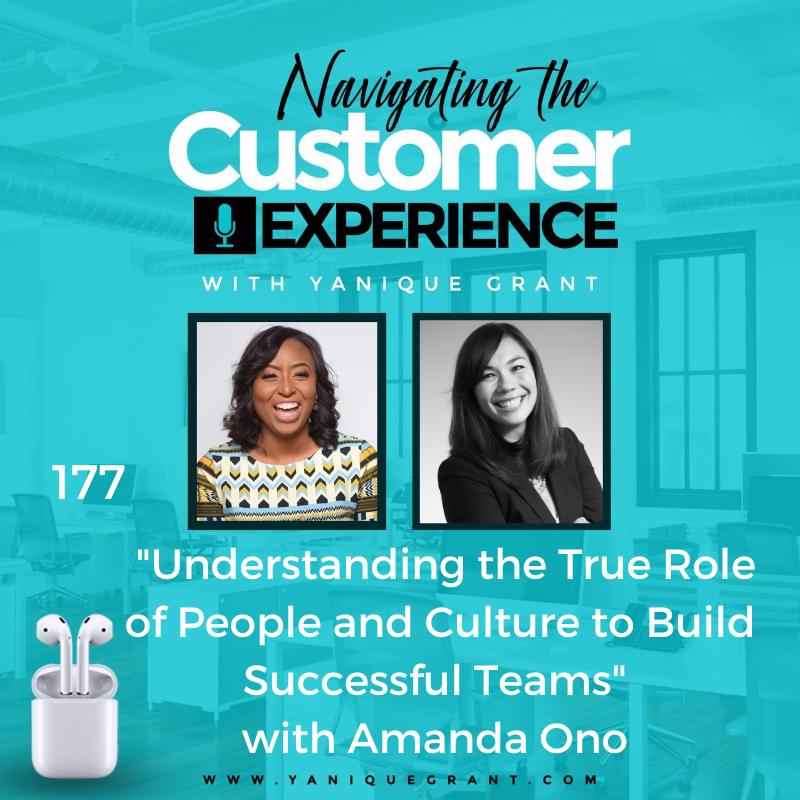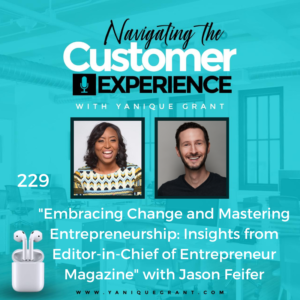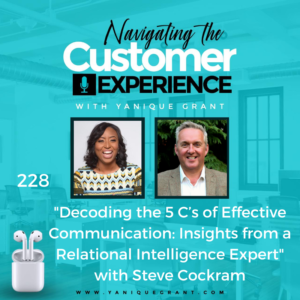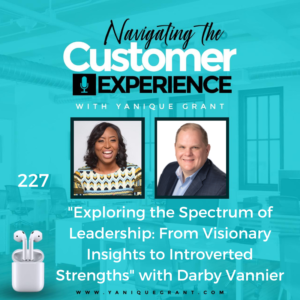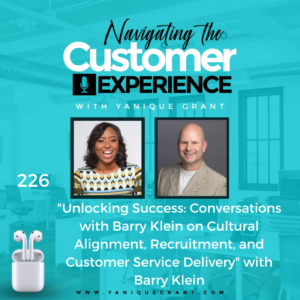Amanda Ono has spent her career learning to maximize a company’s most valuable investment – it’s people. Boasting over 20 years of international experience in organizational development, HR consulting, and change management, she has implemented successful talent and leadership initiatives in six countries across four continents. You can currently find her at Resolver, a Kroll business and worldwide leader in defining risk intelligence, making her mark as both VP Customer Experience and VP People & Culture.
For most of her professional life, Amanda has been on a mission to understand what makes highly effective organizations tick. As an undergraduate in psychology, she saw pioneering research on the effects of unconscious bias and racism in resume screening up close. After graduating, she honed her craft by tackling training and organizational development at talent management firms across Canada. Soon her skills were in such demand that invitations to implement leadership programmes across the globe started to roll in – first in South Africa, followed by Australia, New Zealand, Hong Kong, and Singapore.
Since joining the Resolver team in 2016, she’s only expanded on her record of success. Implementing processes and strategies that have enabled Resolver to scale by over 120%, expand into four countries and acquire three companies. Amanda’s efforts have led to being recognized as one of Canada’s great places to work six years in a row. Despite her accolades, Amanda is determined to continue engaging, accelerating and giving her colleagues at Resolver to deliver on the company’s motto: Aim big, Be Great, and Be Loved by Customers.
Questions
- We’ve read, the formal background of who you are and where you are today. But we’d love for you to tell us the audience and myself, in your own words, a little bit about your journey and how it is that you got to where you work today.
- Could share with us maybe three to five things that you think is critical for leaders to embrace and practice on a daily basis in order to really have successful teams in an organization?
- Sometimes I find that HR in an organization, very few organizations where I’ve interacted with the team members of a company, and they feel so comfortable going to their Human Resource people, how could we change that, what are some ways that we could look for opportunities that HR can really play the role they’re supposed to play?
- Could you also share with us what’s the one online resource, tool, website or app that you absolutely cannot live without in your business?
- Could you also share with us what are some books that you have read that you believe have had the biggest impact with you? Maybe one or two you could share with us, could be that you read a very long time ago, or even one that you read recently, but it really has impacted you.
- Could you also share with us what’s one thing that’s going on in your life right now that you’re really excited about? Either something you’re working on to develop yourself or your people.
- Could you share with us one or two benefits of HR or the people arm of the business actually using it technology to enhance the experience that employees have in the organization? How can technology help that?
- Where can they find you online?
- Do you have a quote or a saying that during times of adversity or challenge, you’ll tend to revert to this quote if for any reason you get derailed or you get off track, and the quote kind of helps to get you back on track and kind of refocus you on what you’re trying to achieve?
Highlights
Amanda’s Journey
Amanda stated that as you can hear, she’s had a nonlinear career path and she truly thinks that a lot of the opportunities she’s had both to lead teams and grow processes have been a result of that. So, she started, as Yanique said, actually went into her undergrad wanting to be a clinician and wanted to be a psychologist. And then she took abnormal psychology and didn’t really know if that aligned with her long term, but taking organizational psychology really clicked, how do people, leaders and organizations work together to achieve results.
So, she’s had jobs in sales and marketing early in her career, she’s worked in both the private as well as the not for profit sector.
But the common thread that she really had across was how do you get the most out of people?
How do you maximize people’s potential?
And so, it’s been a great journey for her, she also had an opportunity to oversee the customer experience side of their business for about two and a half years and that includes both professional services support and learning operations.
And so, she thinks from the range of opportunities she’s had, and just a little bit on her mindset, where she’s pretty open, she thinks you focus on the skills and the work you want to do versus the title, she’s had an incredible journey thus far and look forward to continuing.
Key Best Practices for Leaders to Embrace and Practice to Grow and Develop a Successful Team
Me: Now, people are so important in a business and of course, our podcast is focused on navigating the customer experience. And we’re all customers in everything that we do, I live by the motto that we’re all here on this earth to serve each other, in everything we do we serve each other, in our communities, in our schools, with our children, at church, just everything you do, you’re offering some level of service to someone.
And so, could you maybe share with us being that you have so much experience, developing people skills and talents and working on teams, where you’ve really been able to hone the best out of people.
What do you think are maybe I would say, especially seeing that you have so much experience working with leadership teams across different continents and cultures. Maybe you could share with us maybe three to five things that you think is critical for leaders to embrace and practice on a daily basis in order to really have successful teams in an organization?
Amanda stated that this is a this is a great question. And so, she thinks when you start as a leader, there’s a peace around what are your values?
What do you care about as you grow your business or your organization?
And she thinks that becomes the first foundation in terms of how you’re going to grow the team. And so, she thinks there’s been this great movement over the past few years where people have really said, bring your authentic leadership style to work, she thinks it’s an incredible movement, because you can’t be everything to everyone.
And, and at the end of the day, you are who you are, and your company or your business is who you are, you’re able to serve a certain customer base, you’re able to engage with your employee base a certain way.
And so, you really want to be rooted in that. She thinks employees are smart, they know that if they’ve been sold something in a recruiting process that’s different when they show up to work, they might decide that they want to work somewhere else. So, she thinks as leaders, it’s very important to be really strong in what you believe in, because there’s a role for everyone and a company for everyone but being authentic and honest about it is so important. So, she always says start from that.
And certainly, it Resolver and as they continue to expand with Kroll, they have a deep value in the fact that employees are their customers, they’re one of the customers that they serve, and she couldn’t agree with Yanique more. Service is a key part of how leaders become really successful. And she always says if people in culture teams, they exist to serve the employee base. And so, they have to understand and learn from them and listen, and that’s really why one of her values is that continued curiosity to understand how people operate and understand how she can continue to serve them. So, that she believes is really fundamental.
She would say the second thing for leaders, just to give a couple is to really think about who are you going to recruit into your organization?
So, once you know what your values are, how do you attract people that are going to align to those values?
Again, there’s a company for everyone and having people you can decide that you want to build a company that is extremely high performance, extremely metric driven.
Well, there’s people that are going to suit that environment that are much more competitive and much more driven towards those metrics and goals. So, making sure you have that alignment in the recruitment process is really critical.
She would say the third thing that made them really successful is building good onboarding programmes. So, she’s always found it curious that companies invest a ton in recruiting great people, and then sit them in front of a workstation or at their home office, and hopefully they have a laptop, hopefully they have credentials, hopefully they know what they’re doing.
But setting people up for success early is really, really important. One thing they did at Resolver, is they really looked at how do you build an onboarding programme for a professional services team that was servicing their customer base, and they were able to get people successful and fully utilized at around four to five months versus around eight to nine months.
So, when you’re able to really drill in on those programmes, this is sometimes where people think that “Oh, it’s just an HR programme, or it’s just something HR is asking me to do.” But when you do it well, you can really start to generate revenue. And so, she would say to leaders, have your values aligned, attract the right people, and then make sure you’re onboarding them extremely well. Not only does it help with engagement at the employee level, because she genuinely thinks people want to get up and be successful, they don’t want to get up and do a bad job.
So, it helps them be successful. But there’s also real monetary gain that you can have when you build those programmes well. But she would say those are the three right off the hop that she thinks if leaders do really well, they’re going to create a really strong service culture within their organization.
Opportunities for Human Resources to Play Their Role
Me: Great. Now, apart from leaders, like the CEO and the CFO and the CMO, and all of the top-level leaders in an organization, HR plays a very integral role in an organization. And sometimes, the name HR stands for Human Resources, which is the human, as the name suggests, the resources of the business that are human. Sometimes I find that HR in an organization, very few organizations where I’ve interacted with the team members of a company, and they feel so comfortable going to their Human Resource people, how could we change that, what are some ways that we could look for opportunities that HR can really play the role they’re supposed to play?
I mean, apart from the standard things like benefits and ensuring that the organization is providing the teams with all of the resources that they need to get the job done, I think there’s more that HR can play in terms of really supporting the team members. And sometimes when you talk to employees, they feel like HR is not for them. Do you get that feeling sometimes when you work with organizations or your interactions?
Amanda shared absolutely. This is such a great question. So, one thing they were really thoughtful about because when she joined the organization, she was the first hire to be within the function and she was really specific, because as a software company, very small software company, 90 people at the time when she joined, they’re really afraid that HR was going to be seen as the police, the people that drove compliance, and you have to do this and don’t step out a line.
There was a philosophical alignment that was really important to have with the leadership team. And honestly, even for her as a professional, she wants to join an organization where HR is seen as strategic versus administrative. And so, they were very thoughtful, they’re an early maturity team. And so, they called themselves the Talent Team, because they want to sit where be thought of as holding talent in the organization and enabling them to be successful.
They’ve since broadened and evolved, and now we use the term people and culture, which she thinks is a bigger reflection. But she thinks there’s a philosophical approach that if an organization, where do you sit on the spectrum as HR as administrative versus strategic, and so if you’re part of an organization where HR is seen as strategic, you’re probably really empowered to build programmes that think of employees through an employee lifecycle, much like we think of a customer lifecycle, you acquire, you onboard, you retain, you land and expand, same thing as you think about the employee journey.
And so, she thinks if you’re part of the organization where you’re a little bit more on the strategic side, she thinks you’re able to build some of those programmes, it’s a sliding scale, she doesn’t think there’s any organization where you necessarily are sitting at hard either ends of that spectrum. Because certainly, there’s a bunch of stuff in HR that is administrative, you’ve got to administer benefits, and you’ve got to make sure paperwork is done, that’s super critical to a well-run people and culture organization, but it’s just making sure that you work with leadership that truly sees people as the most significant investment they’re going to make.
Most companies, if you’re a knowledge-based organization, you probably spend between 60% to 80% of your operating budget on people. So, if you don’t view it as strategic, you’re really going to miss out on the opportunity to grow your business. And so, she thinks it’s just how the organization thinks about it, she’s always believed that change and success is rooted in results.
So, she doesn’t think you can necessarily change everything all at once. But if you change a really small thing early and you get success, the rest of the leaders in the organization will say, “Hey, maybe HR isn’t as administrative as I thought it was, maybe it could do more. And maybe I should be relying on them to consult with the business.” So, she thinks it’s got to kind of work both ways. There’s a philosophical piece where you want your leadership to buy into, but it’s also build programmes that are successful, because then you’re going to be able to do a lot more.
App, Website or Tool that Amanda Absolutely Can’t Live Without in Her Business
When asked about online resource that she cannot live without in her business, Amanda shared that for her personally, it’s Asana, which is a task management and project management tool. They are a relatively flat organization and they do a lot of cross collaboration. And so, being able to have teams from product, people in culture, engineering, marketing, product marketing see one view of how they have to collaborate and work together and commit to timelines she thinks is a total game changer in terms of how they’re able to manage accountability and push things forward.
She thinks most organizations don’t necessarily have a ton of maturity when it comes to project management or programme management, she knows certainly, that was a huge skill set she learned in her time at Resolver. And so, she thinks any tool that makes that faster, especially in a distributed world, where you can’t always just rock up to someone’s desk and say, “Oh, hey, did you finish that for me?” She thinks having that tool has really allowed for them to still deliver results and manage accountability and have a shared collaboration space. So, they’re big Asana users, and she’s a huge fan.
Books that Have Had the Biggest Impact on Amanda
When asked about books that have an impact, Amanda shared that she just reread John Kotter’s Leading Change, With a New Preface by the Author, because change and change leadership is a huge part of how leaders have to continue to push their organizations to be innovative and to continuously improve. And so, he has a breadth of research and a ton of really good nuggets in there, which she’s really appreciate it and she thinks are great for her as a leader.
And then she’s just a huge Brené Brown fan, Daring Greatly: How the Courage to Be Vulnerable Transform the Way We Live, Love, Parent, and Lead, so that was a little bit more on a personal level. But she thinks it was really informative for her. And part of the hard work of being a leader is looking inside, it’s not always pretty in there but it’s what’s going to make you better to serve your employees and your customers is looking inside and asking yourself the hard questions. And so, those are ones that she often recommends to people, they’re very top of topical for her and have really helped her advance and continue to challenge herself in the way she leads.
Me: Amazing. I love Brené Brown, I think her content is truly amazing. And she actually has a video that I found a couple of years ago on the difference between empathy and sympathy that she did at a TED talk, that I thought was really, really good, because I think a lot of people just really mix up the difference between being empathetic versus being sympathetic. And sometimes even the words that we use sends a signal of sympathy rather than one of empathy.
Amanda stated that she totally agrees. She thinks the work she’s (Brené Brown) done on empathy, especially as it relates to the workplace, she’s done an incredible job with that. For them, as Amanda has built various programmes on the employee side and on the customer side, she always thinks about ensuring that they’re rooted in empathy. Because at the end of the day, understanding each other and supporting each other to achieve things is really how they’re going to get results. So, she would say it’s extremely central to how she’s had an opportunity to build things. And for many companies, empathy is at the root of how you are going to be in service of both your employees and your customers.
What Amanda is Really Excited About Now!
When asked about something that’s going on right now she is excited about, Amanda stated that that’s a great question. So, recently Resolver was acquired in the spring of this year by Kroll, which is professional services company. And Resolver as well as several other technology companies are going to be the digital arm of Kroll, so Kroll Digital Services.
So, she was very fortunate to be given the opportunity to step in as the Chief Human Resource Officer for that role, again, going back to her point about the HR title, but that’s how they level them so that’s fine. So, as a business unit that’s emerging, that’s going to be digital first inside a company, she’s been given the very tall order to work with the team on how do we form a great culture within a digital first business unit?
What does that look like? How do you integrate these companies that have slightly different cultures, but still want to achieve great things through technology for a vast array of customers around the world?
So, that’s a very recent shift. So, it’s really exciting, lots of work ahead. But she realized in her career, she likes building stuff, she has a value around getting to build stuff and getting to test and pilot things and so that’s the next chapter for her. So, she’s really excited for that.
Benefits of HR Using Technology to Enhance the Experience that Employees Have in the Organization
Me: So, when you were talking just now in terms of your new role and using technology, it piqued my interest to ask another question as it relates to human resources and technology. Maybe could you share with us one or two benefits of HR or the people arm of the business actually using technology to enhance the experience that employees have in the organization? How can technology help that?
Amanda shared that employees, especially over the past 10 to 15 years were such a tech first society, especially in North America, but globally, and so employees look at how they engage with their employers like they would as consumers. And so, they are, again our internal customers or consumers of processes and programmes that any organization is going to run.
And so, being tech-enabled is super important, making it easy for people to update their employment records and it’s not a piece of paper, but they can do it on their mobile, she thinks being able to do things like a performance review process through a technology that is fast and easy to do.
And, again, potentially mobile enabled, super important. She thinks technology can help enable most things. She always say that technology doesn’t solve the process, it just makes the process faster. So, what some people try to do is they say, “Okay, finally, I’ve got some budget, I’m going to put in a technology.” Which is great, it’s wonderful, certainly she’s worked with various organizations that were super paper based, which becomes a barrier for employees to engage with things like performance conversations.
And so, again, the more tech enabled, you can make it the better. But the hard work is actually to step back and say, “What do we want this to look like? What are we trying to drive as the result, and then let’s make sure the technology makes that true for us.”
So, she thinks technology has a wonderful capability to drive efficiency, specially drives reporting, because it makes it really easy for all information to be in one spot. But the hard work of the leadership team is to step back and to say, what do we actually want to achieve? Let’s draw out a process that makes sense and then let’s enable it through technology.
She thinks sometimes people go the other way and she’s seen it the other way and it ends up being a major challenge. Because at the end of the day, the process has to be good, it has to be simple for employees. To Yanique’s point earlier about employees being customers, we as a society now really have a high bar for things being easy, for it being a few clicks, for it being enabled by technology.
And so, if organizations are thinking about their employee base is not thinking differently when it comes to HR tech and how they interface with HR tech, they’re probably going to have people that kind of moan and groan about the stuff they have to do on paper or an excel spreadsheet or anything like that. So, huge fan, think there’s lots of work to be done to make it really effective. But she thinks certainly the reality of a pandemic and being most companies now having some form of distributed work team makes it doubly important to what it was three years ago. But that’s definitely a frontier for people to make sure that they’re crossing to ensure they’re serving their employee base.
Me: Yeah. Wow. You know, you said three years ago, totally unrelated to what you’re talking about and I just realized, wow, January, February makes it three years since we’ve been in this pandemic.
Amanda shared that it’s wild and honestly, she thinks she’s an optimist by design and one of the best outcomes from COVID for employees specifically and employers is twofold. One, it made us totally rethink if employees need to be in the office full time. And there’s some jobs where that’s still true. But there’s many companies, Resolver, and Kroll Digital included, where you can be hybrid. And so, she thinks shifting that narrative was as true, we mark the three-year anniversary of that win for employees.
And the second thing is people became a lot more open about talking about mental health and the impacts of mental health because the wall between work and home was just shattered for most of us. And so, she’s certainly within their employee base notice a difference in the courage to have those conversations and to bring more vulnerability to work. She’s seen that shift and it’s a positive one because it allows them to understand that what people are going through and how they might support them moving forward.
So, three years in, lots of stuff that she’s sure we’d like to go back in time on. We’re here or what we have. And she certainly thinks from an employee perspective, there’s been some great wins and she hopes now what most companies are able to do is to say, “Okay, let’s take what we’ve learned, and let’s make the offering and how we serve our customer or employee base even better.”
Where Can We Find Amanda Online
LinkedIn – Amanda Ono
Quote or Saying that During Times of Adversity Amanda Uses
When asked about quote or saying that she tends to revert to, Amanda stated that she thinks this one needs to get printed on a T-shirt for her. Her granny told me when she was little, and it’s constant on repeat for her, especially during COVID. But she thinks as you continue to evolve, “It’s just controls what you can control.”
There’s so many things that are dependent and you can’t really influence but if you really narrow focus on the things that you can move, even on days where you’re not feeling the best, you have control to go out and get some fresh air and go for a walk and get some perspective, you have control of engaging with very kind relationships with people on your team, you have control to just kind of laugh off maybe that colleague that always is a little bit harsh on a call.
So, that’s her t-shirt, stated that probably she should wear it daily, maybe actually next time she pops onto a Zoom call with her team, she should have it on a t-shirt, they’ll probably like that. But that’s definitely hers, control what you can control.
Me: Control what you can control. Love it. Well, thank you so much, Amanda for hopping on to our podcast and Navigating the Customer Experience, sharing all of these great insights and nuggets as it relates to people and culture, building strong teams, the importance of leadership and some of the key things that leaders need to do in order to build successful teams and great cultures. And just sharing with us, based on your journey, your experiences that you’ve had, and allowing our listeners to really tap into what are some ways that they can explore to really navigate and create great success. We’re embarking on a new calendar year, lots of great opportunities that we may not have been able to tap into in 2022 and those doors may still be open in 2023. So, we really appreciate you sharing this great content with us today.
Please connect with us on Twitter @navigatingcx and also join our Private Facebook Community – Navigating the Customer Experience and listen to our FB Lives weekly with a new guest
Grab the Freebie on Our Website – TOP 10 Online Business Resources for Small Business Owners
Links
- Leading Change, With a New Preface by the Author by John Kotter
- Daring Greatly: How the Courage to Be Vulnerable Transform the Way We Live, Love, Parent, and Lead by Brene’ Brown
The ABC’s of a Fantastic Customer Experience
Do you want to pivot your online customer experience and build loyalty – get a copy of “The ABC’s of a Fantastic Customer Experience.”
The ABC’s of a Fantastic Customer Experience provides 26 easy to follow steps and techniques that helps your business to achieve success and build brand loyalty.
This Guide to Limitless, Happy and Loyal Customers will help you to strengthen your service delivery, enhance your knowledge and appreciation of the customer experience and provide tips and practical strategies that you can start implementing immediately!
This book will develop your customer service skills and sharpen your attention to detail when serving others.
Master your customer experience and develop those knock your socks off techniques that will lead to lifetime customers. Your customers will only want to work with your business and it will be your brand differentiator. It will lead to recruiters to seek you out by providing practical examples on how to deliver a winning customer service experience!

